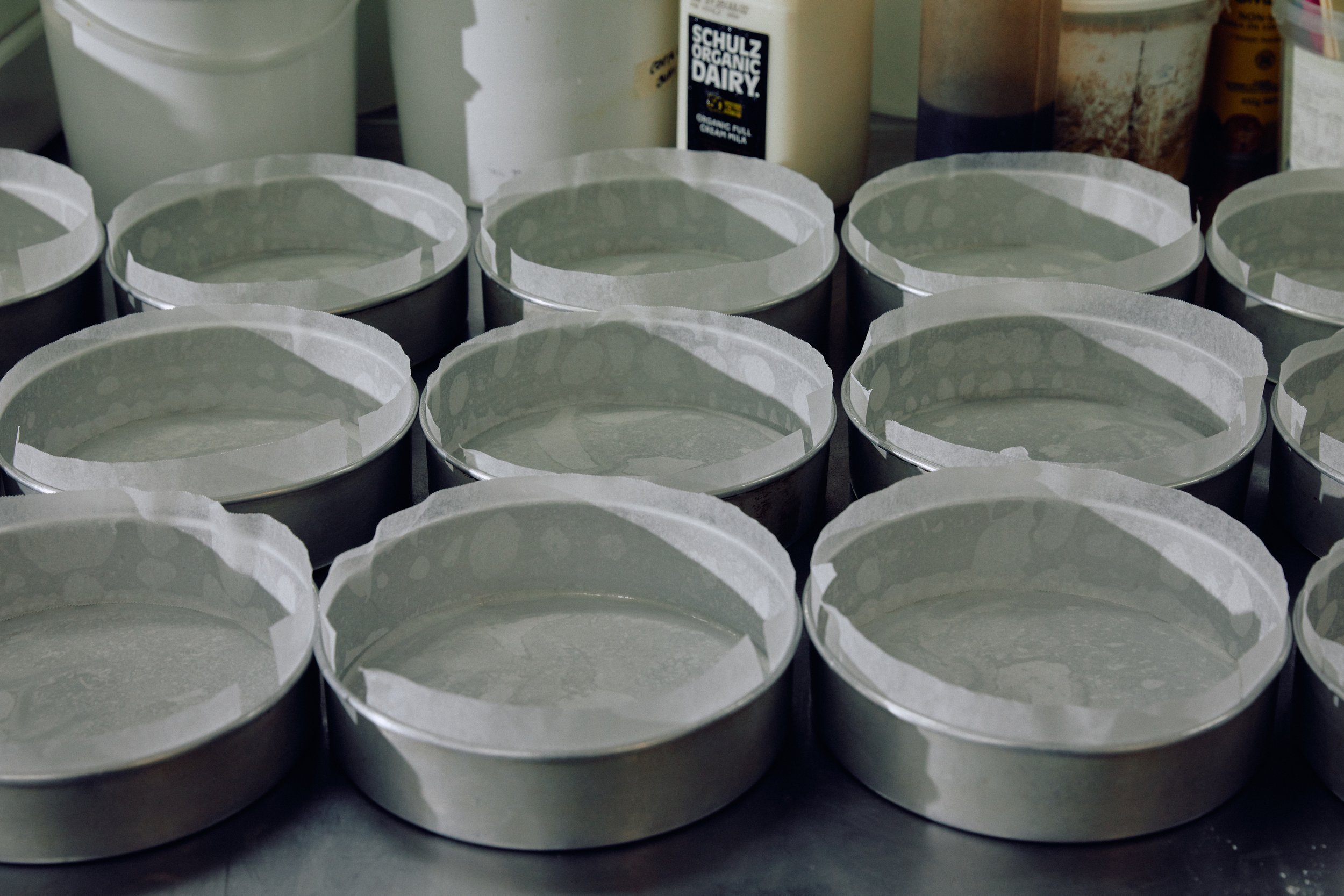BEATRIX BASE-IX: HOW TO LINE A CAKE TIN
LINING A CAKE TIN OR PAN
All cakes and tray bakes require a different kind of lining so if your cake isn’t the lofty gal you are after OR the cake rises then slumps (or worst ever, sticks!), you may need to adjust how you line a tin. Lining tins optimally also means your cake can be removed without tears and rude words (this feeling tends to be very bundt-centric). Before you declare the recipe a failure, you can change the liner method as a first remedy. If the lining isn’t specified in a recipe, my hard and fast rules are:SQUARE OR RECTANGLE TINS (NOT LOAF TINS Cross hatching: spray lightly with oil spray. Cut one piece of paper the snug width of the tin and place in the tin. Spray again and cut a second piece of paper. Lay it across the first piece. Trim any flappy, too high edges. This is great to lift out chilled tray bakes. Just cut strips of baking paper for the sides and a large piece of paper for the base. LOAF TINS Take a piece of baking paper that is 5 cm longer than your tin on both sides. Invert the tin and place the paper on top. Push the paper to fold over the tin edges. Re-invert the tin, spray the inside with cooking oil and place the paper inside. Trim any flappy edges. SPONGE CAKES Need oil spray and a light dusting of flour and paper on the bottom. Where the sponge base becomes your sponge top for a sponge sandwich, spraying the paper again before dusting with make the paper peel off without removing the crust post bake. BUTTER CAKES like a base and sides lined with paper and oil spray. SOUFFLE-Y CAKES That rise and fall like a flourless cake will need tall side paper. And you can reinforce by making these paper sides double thickness. Use oil spray to adhere the two paper layers together. BUNDT TINS The most infuriating fail in the kitchen is when half the cake drops away and the remainder is left behind. This CAKE GOOP works a treat! Mash equal quantities of almost melty butter, vegetable oil (or coconut oil) and flour to a paste and spread the tin liberally with this. I am going to try this with cocoa in lieu of flour to retain the rich cocoa appearance of a chocolate cake. USING BUTTER I do use this on Souffle Cheesecakes - it releases the cake to grow taller better than any heavy spray can do. I tend to prefer the clean-ness of aerosol oil spray. It also minimises a crust forming. Use an angel’s brushing of melted butter if oil spray doesn't appeal or for selected bakes like a Japanese souffle cheesecake. You can also buy nifty refillable atomisers that are oil specific. FROZEN/CHILLED CAKES AND DESSERTS I like to line cold dessert tins with a light oil spray and then baking paper strips on the side and a piece on the base of the tin. You can use a layer of plastic wrap but it will create wrinkles when you unmould. This is so okay if you are swiping the sides or adding another coating of cream over the top. Still spray the tin first as it will keep the plastic in situ as you fill.Always get your tin prepped and placed into the freezer prior to starting a frozen dessert so the mix gets a chilly kick start to freezing. Text by ©Natalie Paull 2024 ©Beatrix Bakes 2024 
